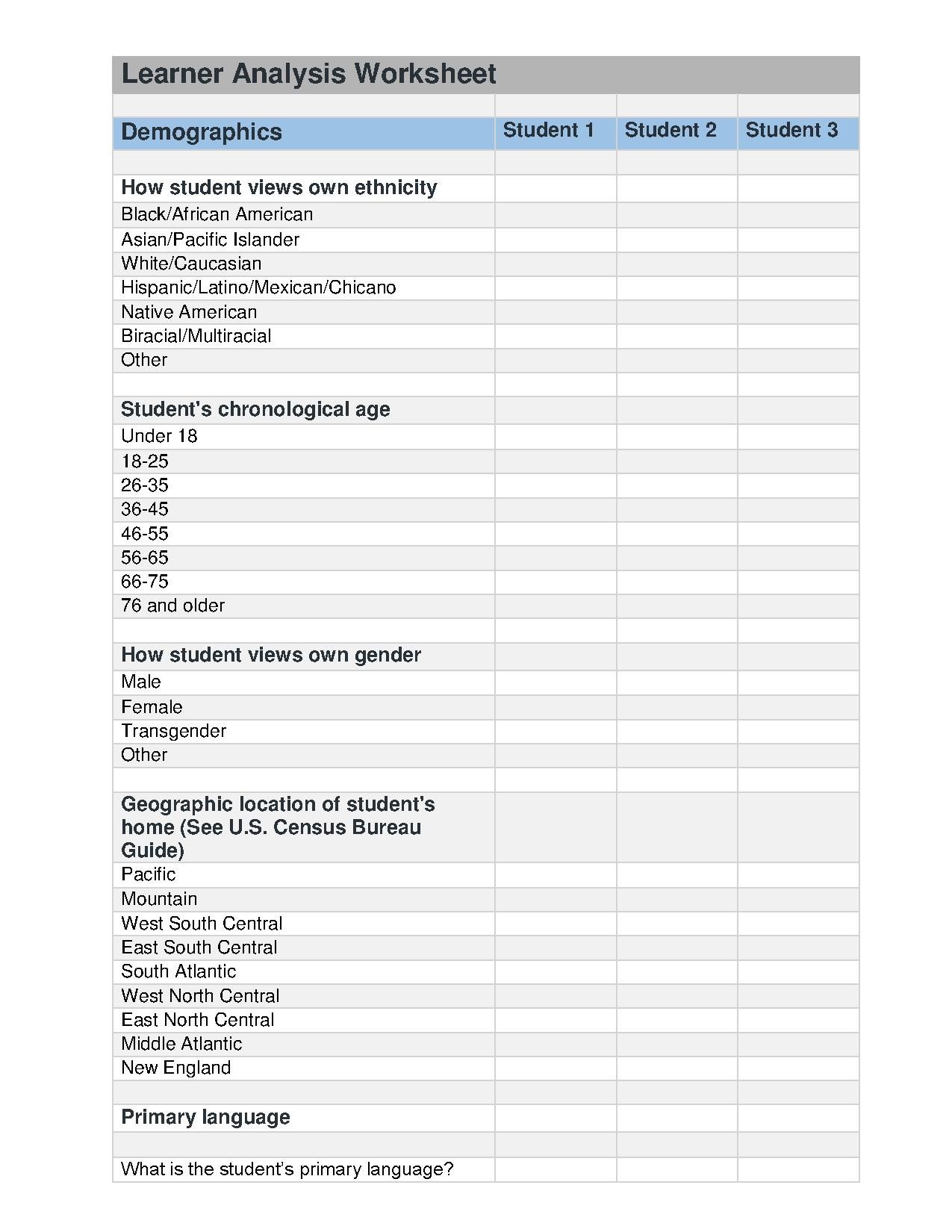Instructional design/Learner analysis/what when why
What is Learner Analysis
[edit | edit source]Analysis is the first and most important phase of the ADDIE process. There are several steps within the analysis phase. Learner analysis is the process of identifying who your audience is; their demographics, prior knowledge, physiological and affective and social needs. Each of these areas will shape your design decisions and influence the instructional methods and strategies that you choose to implement.
When do you need a Learner Analysis
[edit | edit source]As an instructional designer, you should always conduct a learner analysis before moving into the design phase. Design based on a designer making assumptions or trying to control what the characteristics of the audience should be will most likely result in an ineffective learning environment.
Why is conducting a Learner Analysis Important?
[edit | edit source]Before you can begin to design an effective learning environment, you must know enough about your learners to make careful considerations about how to best introduce and engage them with course material.For example, the types of interactions you include in the course will vary, depending on whether it is a fully online course with 100 undergraduate students or a hybrid graduate level capstone course with just a cohort of 10 students. Understanding various characteristics of your learner population enables you to design a course that best addresses their range of needs.
Steps to conducting a Learner Analysis
[edit | edit source]
Intro to Learner Analysis Worksheet
[edit | edit source]During your learner analysis, you will want to have a way to record the data that you collect for each of the four characteristic areas. There may be times when you have the opportunity to collect information on each individual learner (worksheet below on the right) and other times when you may just have more general information about the learners as a group (worksheet below on the left). Depending on your situation, you can use a worksheet similar to the ones provided here, to record information for later reference, once you begin to design your learning environment.
Right Click the image below and choose to "open in new tab or window" |
[edit | edit source]
Recommended Reading
[edit | edit source]Eastham, N. (2011). Learner analysis. University of Northern Colorado. Retrieved from http://www.unco.edu/cetl/sir/sizing_up/learner_analysis.html
Justice, L. K. (2003). Learner/context analysis. Kent State University. Retrieved from http://www.personal.kent.edu/~lkjusti1/objectivelyspeaking/learner_context_analysis.htm
Lsulami, R. A. (n.d.). Learner analysis. Blendspace by TES. Retrieved from https://www.tes.com/lessons/Wf12BNREPMrbBg/learner-analysis
Lynne (2012). 5 ways learner analysis will impact instructional design. Langevin Learning Services. Retrieved from http://www.langevin.com/blog/2012/09/17/5-ways-learner-analysis-will-impact-instructional-design/
Stolovitch, H. D. & Keeps, E. J. (2008). Learner analysis. Harold D. Stolovitch & Associates Learning & Performance Solutions: Los Angeles, CA. Retrieved from http://www.hsa-lps.com/E_News/ENews_Oct08/mainFrame_Oct08.htm
Move to Page 3: Intro to Learner Analysis Worksheet - Demographics
[edit | edit source]
Home: Learner analysis | What,When & Why | Demographics | Cognitive | Physiological | Affective | Analyzing Student Records | Lesson Summary



